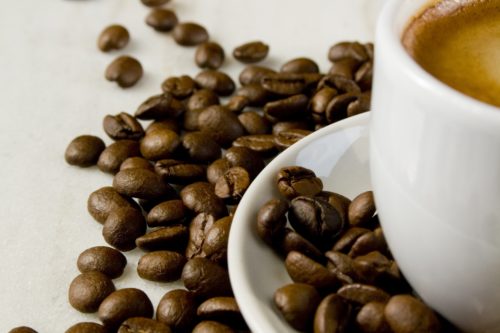
How to Order Coffee in Italian
When in Italy, there’s no doubt you’ll want to stop by a café and order a coffee, Italian-style.
To do this, you’re going to need the right vocabulary and some useful phrases, so you can correctly ask the barista for your preference in a caffeine fix.
To help you achieve this, we’ve compiled this helpful post for you about how to order coffee in Italian. Plus we’ve got a section on Italian coffee culture, so you’re in the know while downing espressos in charming Italian cafés.
Contents
- Phrases for Ordering Coffee in Italy
- Words for Coffee in Italian
- Typical Italian Bar Snacks
- Other Bar Vocabulary
- Phrases You Might Hear From the Barista
- Phrases for Going Out for Coffee
- Ordering Coffee in Italy: Example Conversation
- Tips About Italian Coffee Culture
- And One More Thing...
Download: This blog post is available as a convenient and portable PDF that you can take anywhere. Click here to get a copy. (Download)
Phrases for Ordering Coffee in Italy
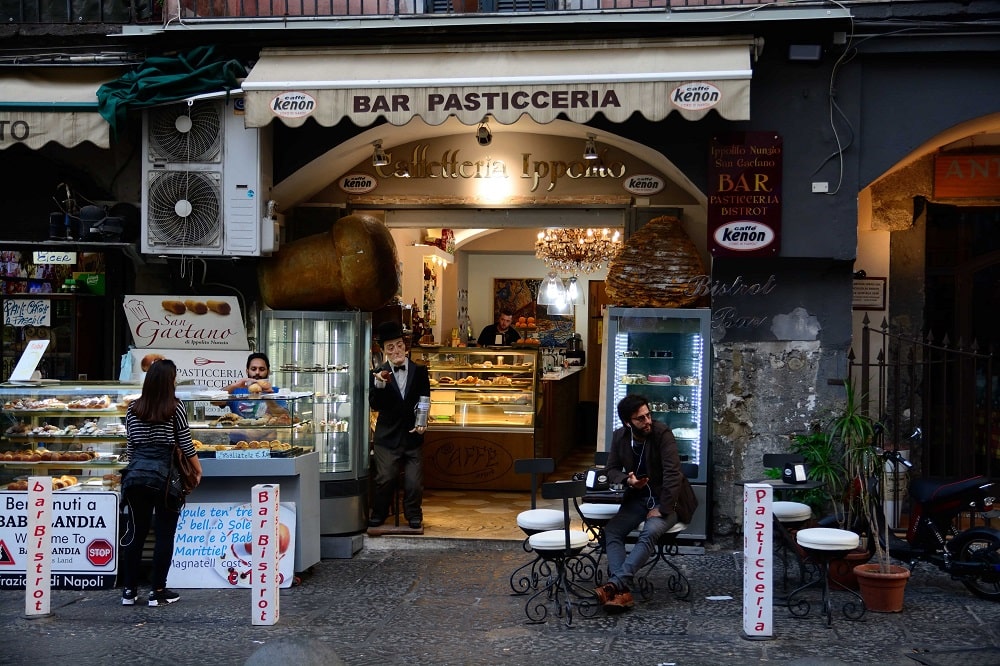
Un caffè per favore. — A coffee, please.
Vorrei un caffè per favore. — I would like a coffee, please.
Note that the default coffee in Italy is espresso, so if you just ask for a coffee, you’ll get a single shot of espresso.
Words for Coffee in Italian
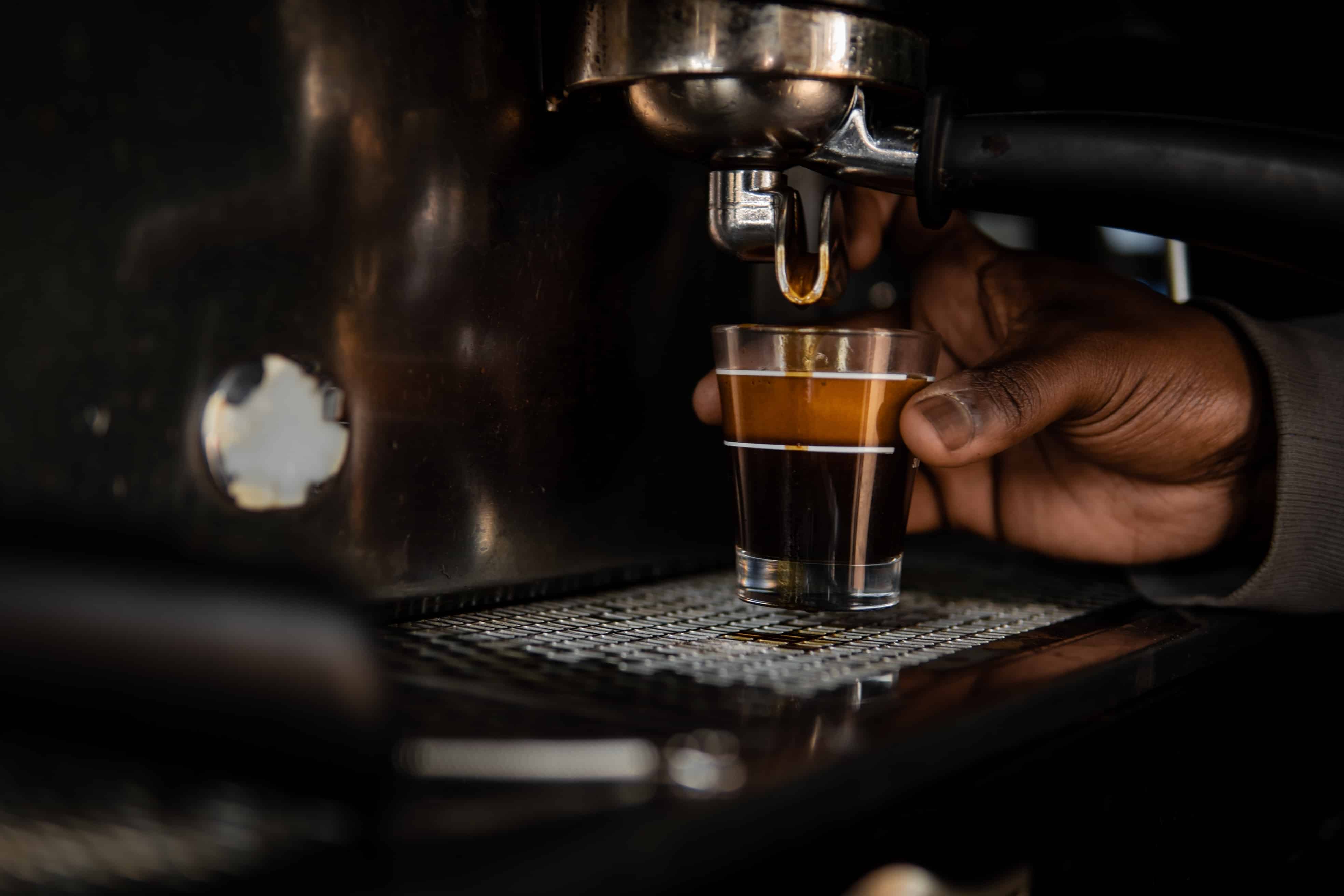
You may recognize some of these words from the Starbucks menu.
Be aware that in Italian, coffee drinks tend to be quite traditional. There is no small, medium or large sizes. Coffee doesn’t come with mountains of whipped cream and caramel sauce.
In general, Italian coffees are small—very small.
Also, since there are many choices, you should make up your mind before it’s your turn to order. If you don’t have your dictionary app in hand, here’s a list of all the essential Italian bar vocabulary. What follows are the staples that every Italian bar will have:
Espresso — A strong shot of black coffee served in a small cup.
Doppio espresso — Two shots of espresso (some claim that this is more for tourists)
Caffè corto — Just a few drips of pure, concentrated caffeine
Caffè americano — An espresso shot diluted with hot water, similar to black coffee.
Caffè lungo — An espresso shot brewed with more water, resulting in a slightly milder taste than a regular espresso.
Cappuccino — Equal parts of espresso, steamed milk and milk foam, usually sprinkled with cocoa or cinnamon on top.
Caffè latte — A milder coffee made with espresso and a larger amount of steamed milk, with a small amount of milk foam on top.
Latte macchiato — Steamed milk “stained” with a shot of espresso, creating distinct layers of coffee and milk.
Macchiato — An espresso “stained” with a small amount of steamed milk or milk foam.
Caffè corretto — An espresso “corrected” with a shot of liquor, often grappa, brandy or Sambuca.
Marocchino — An espresso shot served in a glass with cocoa powder, milk foam and a sprinkle of chocolate.
Caffè ristretto — An extra-strong espresso made with the same amount of coffee but less water, resulting in a more concentrated flavor.
Caffè shakerato — Espresso, ice, and optional sugar, shaken together until frothy, then poured into a glass.
Caffè freddo — Cold coffee, often served with ice, and sometimes sweetened with sugar.
Caffè mocha — Similar to a hot chocolate but with added espresso, steamed milk and whipped cream.
Bicerin — A traditional drink from Turin, made with layers of espresso, hot chocolate and whipped cream.
Caffè al ginseng — Coffee with ginseng flavoring, popular in some Italian cafés.
Other hot drinks
Il tè — Tea, which is now growing in popularity in Italy
Cioccolata calda — This is hot chocolate, and not that powdered stuff from the package. Only served in winter, Italian hot chocolate is a true treat that’s closer to hot chocolate pudding. Yum!
Latte — Though many Americans think this means “café latte,” in Italy, this will get you a cup of warm milk, because that’s what it means: milk.
Typical Italian Bar Snacks

Un panino — A sandwich, usually with cheese and prosciutto (Note: in Italian it doesn’t necessarily mean a toasted sandwich.)
Un tramezzino — A thin sandwich on soft white bread
Le patatine — Potato chips/crisps
Un cornetto — Italian croissant, they come either plain or filled with chocolate or custard
Le olive — Olives
Le nocciole — Hazelnuts
Other Bar Vocabulary
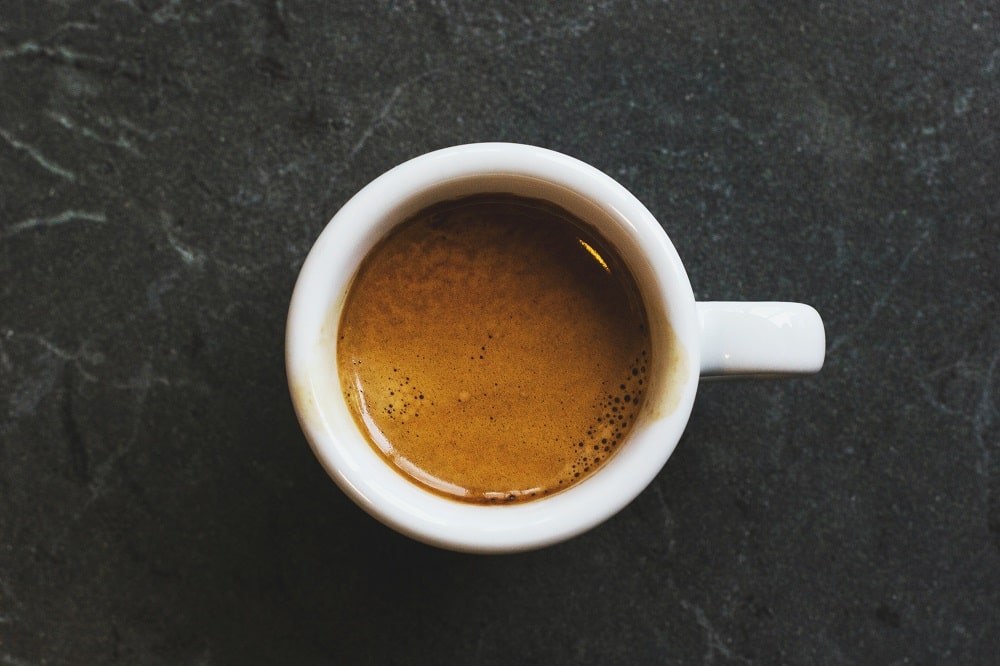
La tazza — A cup, usually referring to the small, ceramic (or sometimes glass) espresso cups. Those used for cappuccinos are slightly larger.
Il bicchiere — Glass
When you order an espresso in Italy, you’ll usually be given a small glass of water as well.
Il cucchiaino — Those tiny little spoons they give you to stir your coffee
Il banco — The counter where you place your order
Pro tip: coffee is usually cheaper if you drink it standing at the bar. Many cafes charge extra to bring it to your table.
Una bottiglia d’acqua liscia/frizzante — A bottle of water without/with bubbles
Lo zucchero — Sugar
Phrases You Might Hear From the Barista
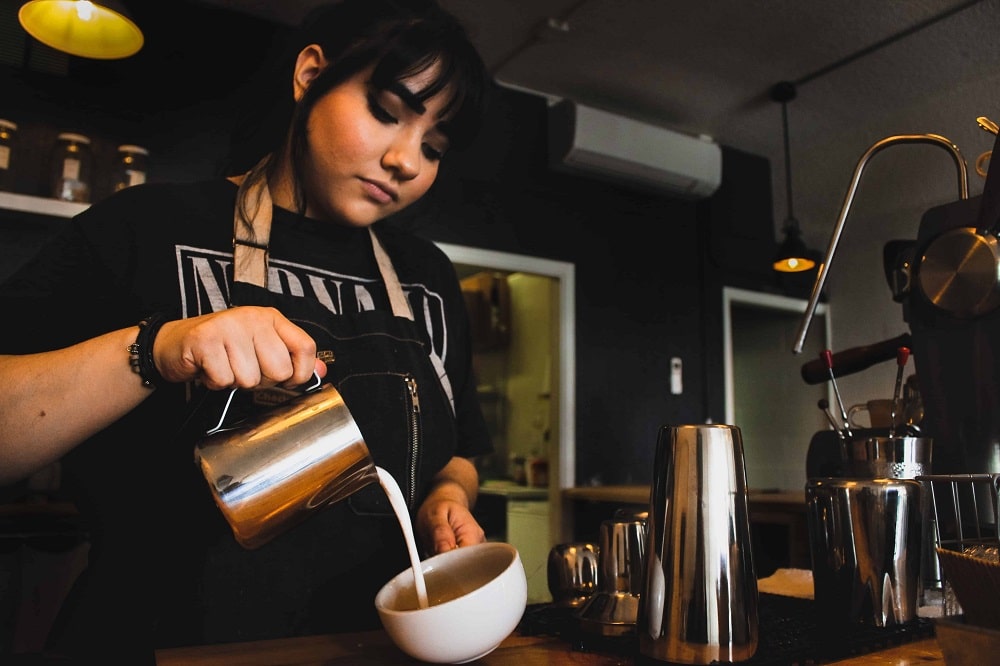
Come lo desidera? — How would you like it?
Basta così? — Is that it?
Meaning, is your order finished? You can reply “Si,” or tell the barista what else you want.
Ecco a Lei. — Here you go.
This is said when the barista presents you with your order. This is the time to thank him or her.
Phrases for Going Out for Coffee
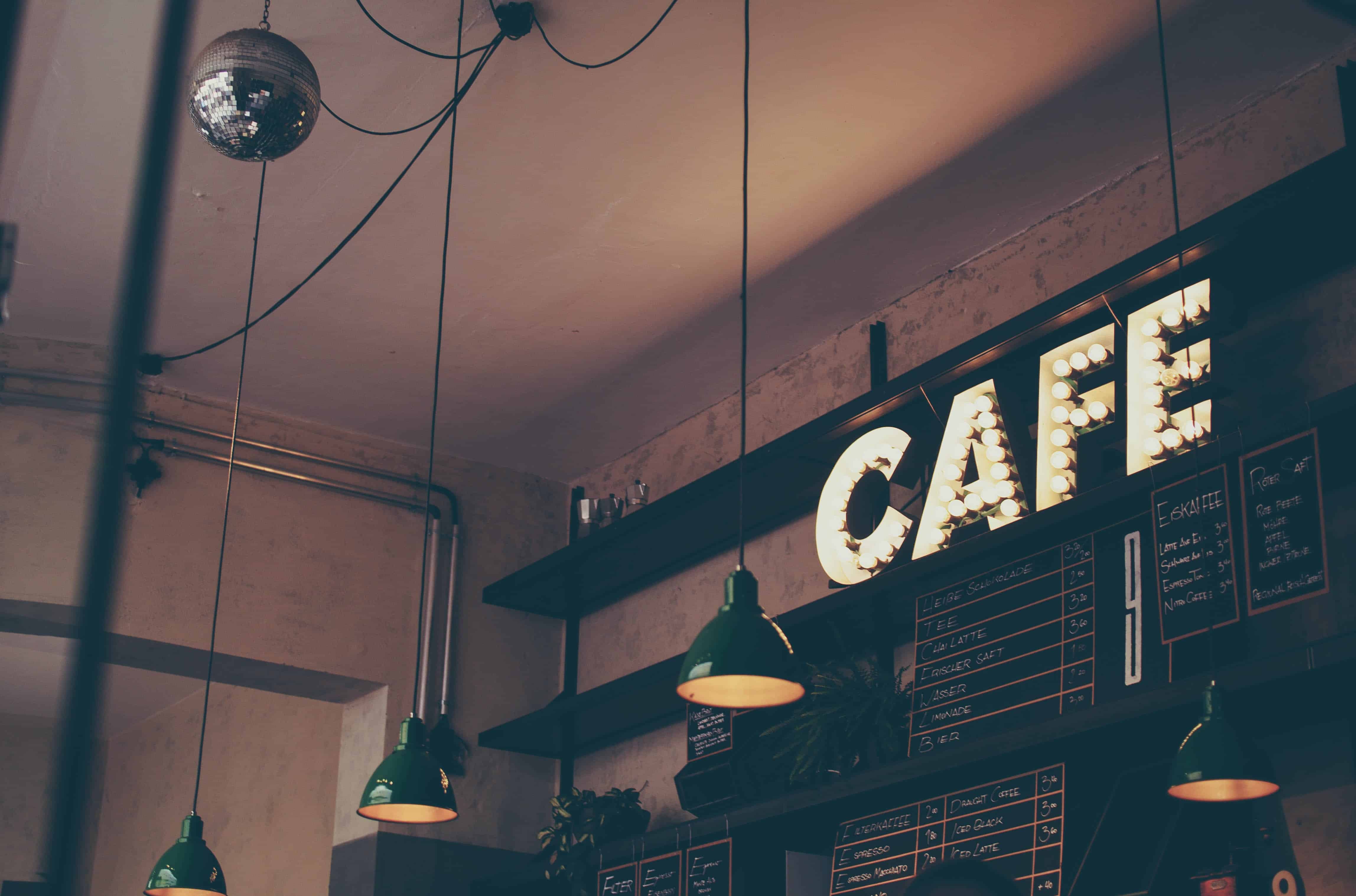
Andiamo al bar/al caffè. — We’re going to the bar/café.
Prendiamo un caffè. — We’re getting some coffee (literally “We’re taking a coffee.”)
Vuoi andare al bar/al caffè? — Do you want to go to the bar/café?
Vuoi un caffè? — Do you want a coffee?
This is typically used between close friends.
Ti piacerebbe un caffè? — Would you like a coffee?
This is more polite but still informal.
Le andrebbe un caffè? — Would you like a coffee?
Use this to sound very formal. It’s more appropriate for situations like business meetings.
Volete un caffè? — Do you want a coffee?
Vi andrebbe un caffè? — Would you like a coffee?
If you’re asked if you would like to go for a coffee, you can reply:
Sì, con piacere. — Yes, with pleasure.
No, grazie. — No thank you
Note: If you go to a bar, you should order something, even if it’s just water.
Ordering Coffee in Italy: Example Conversation

Customer: Buongiorno! Vorrei una cioccolata calda, per favore. — Good morning! I’d like a hot chocolate, please.
Barista: Buongiorno! Certo, una cioccolata calda. La vuole con panna? — Good morning! Certainly, a hot chocolate. Would you like it with whipped cream?
Customer: Sì, con panna, per favore. — Yes, with whipped cream, please.
Barista: Va bene. Qualcos’altro? — Alright. Anything else?
Customer: Vorrei anche un caffè. — I’d also like an espresso.
Barista: Perfetto. Cioccolata calda con panna e un cappuccino con zucchero. Le andrebbe un caffè? — Perfect. Hot chocolate with whipped cream and an espresso.
Customer: Si, per favore. — Yes, please.
Barista: Qual è il suo nome per l’ordinazione? — What’s your name for the order?
Customer: Il mio nome è Carla. — My name is Carla.
Barista: Grazie, Carla. Le sue bevande saranno pronte in un attimo. — Thank you, Carla. Your drinks will be ready in a moment.
The Barista prepares the drinks and calls out the order.
Barista: Una cioccolata calda con panna e un caffè per Carla! — A hot chocolate with whipped cream and an espresso for Carla!
Customer: Grazie mille! — Thank you very much!
Barista: Prego! Buona giornata, Carla! — You’re welcome! Have a great day, Carla!
Customer: Anche a Lei. Arrivederci! — You too. Goodbye!
Barista: Arrivederci! — Goodbye!
If you’d like to see more examples, you can find bite-sized videos of native speakers ordering drinks in a café in Italian on FluentU.
FluentU takes authentic videos—like music videos, movie trailers, news and inspiring talks—and turns them into personalized language learning lessons.
You can try FluentU for free for 2 weeks. Check out the website or download the iOS app or Android app.
P.S. Click here to take advantage of our current sale! (Expires at the end of this month.)
Tips About Italian Coffee Culture
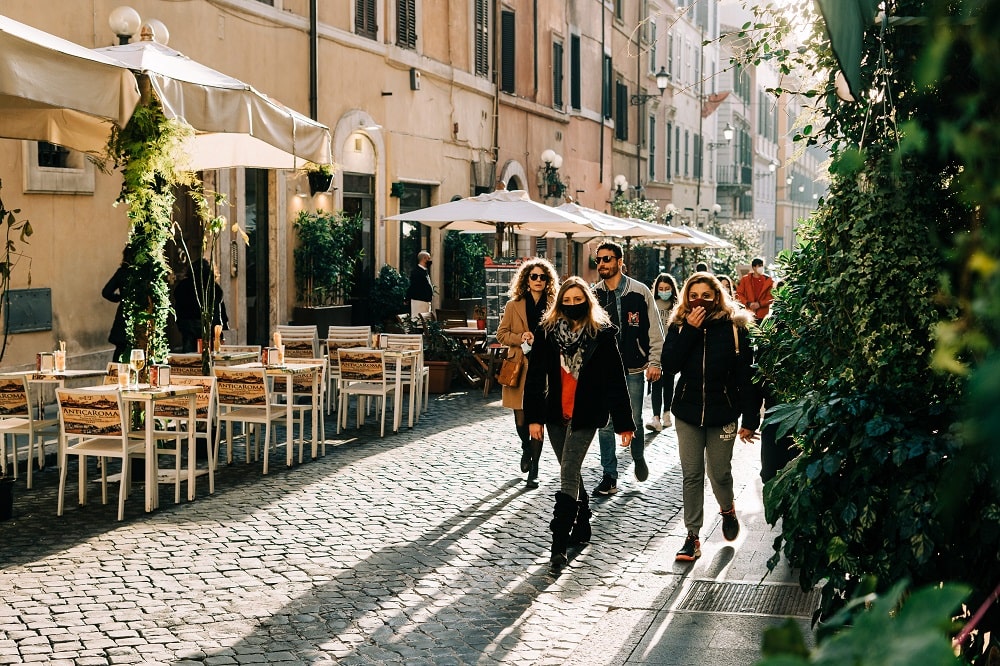
Bar vs. café
In the Italian language, there are two words that correspond to the English word “café.” Italians use the words il bar and il caffè to refer to the same type of establishment, which is a place where you can get both coffee and alcoholic beverages.
Most bars/cafés have full bars where you can purchase wine, beer and cocktails in addition to coffee. Italians also tend to use the words “bar” and “café” interchangeably. Some places will lean more towards coffee, while also selling pastries and sandwiches as well. Others will focus more on alcoholic drinks and serve savory snacks, but they’ll also serve coffee.
Additionally, the American conception of bars (as in sports bars) and cafés (as in Starbucks) don’t exist in Italy, except in some airports for tourists.
When do Italians go to the bar?
The better question is, “When do Italians not go to the bar?” Italians might go to the bar before they go out to dinner or to the club (this is called aperitivo). Likewise, they may go after the club or dinner to relax before going home.
During the day they may go there to meet up with friends or strike up conversations with neighbors to find out what’s going on in the neighborhood. It’s also a great place to sit with your magazine or newspaper, drink your coffee and find out what’s going on in Italy and the world. Occasionally (and always during the day), people go there for some “me time” to read the paper, a book or listen to an audiobook (with headphones of course).
And though the cup of coffee is small, Italians take the time to savor it, either sitting at a table or standing at the bar. There is no “coffee to go.”
What can you eat at the bar?
Bars in Italy typically don’t serve full meals. Usually, they specialize in coffee, sandwiches and stronger drinks. Some cafes are also pastry shops, or pasticcerie.
Cafés are the only places in Italy where you can go out for breakfast, though the only breakfast foods they tend to have are cappuccino and cornetti, Italian croissants that can be plain or filled with custard or chocolate/hazelnut spread.
What cafés serve also differs by region. In southern cities like Napoli and Palermo, you can go to a cafe that serves the most luscious, ricotta, chocolate and rum-filled pastries with coffee. From Rome northward, cafés and pasticcerie are more separated, with the former serving more savory snacks.
Next time you travel to Italy, try out some of these phrases at the bar.
There are few better, tastier or more aromatic ways to immerse yourself in Italian culture.
Download: This blog post is available as a convenient and portable PDF that you can take anywhere. Click here to get a copy. (Download)
And One More Thing...
If you're as busy as most of us, you don't always have time for lengthy language lessons. The solution? FluentU!
Learn Italian with funny commericals, documentary excerpts and web series, as you can see here:
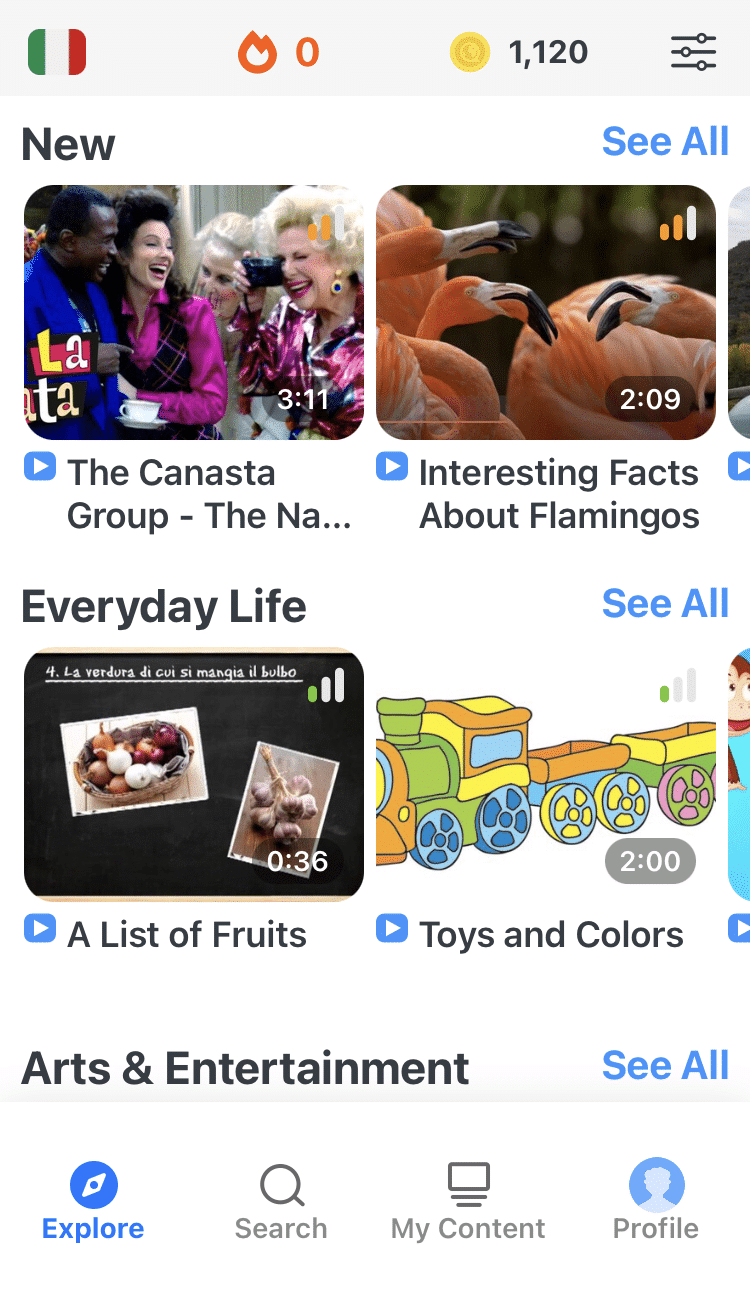
FluentU helps you get comfortable with everyday Italian by combining all the benefits of complete immersion and native-level conversations with interactive subtitles. Tap on any word to instantly see an image, in-context definition, example sentences and other videos in which the word is used.
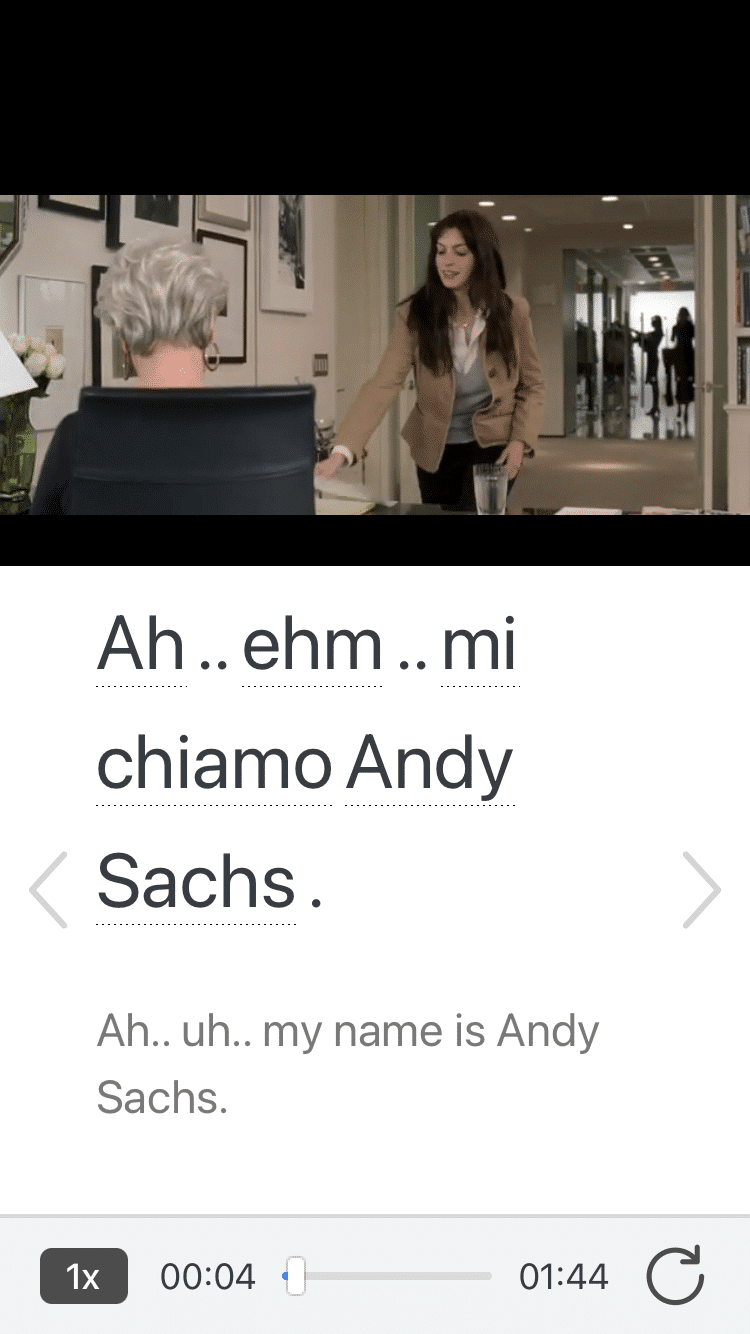
Access a complete interactive transcript of every video under the Dialogue tab, and review words and phrases with convenient audio clips under Vocab.
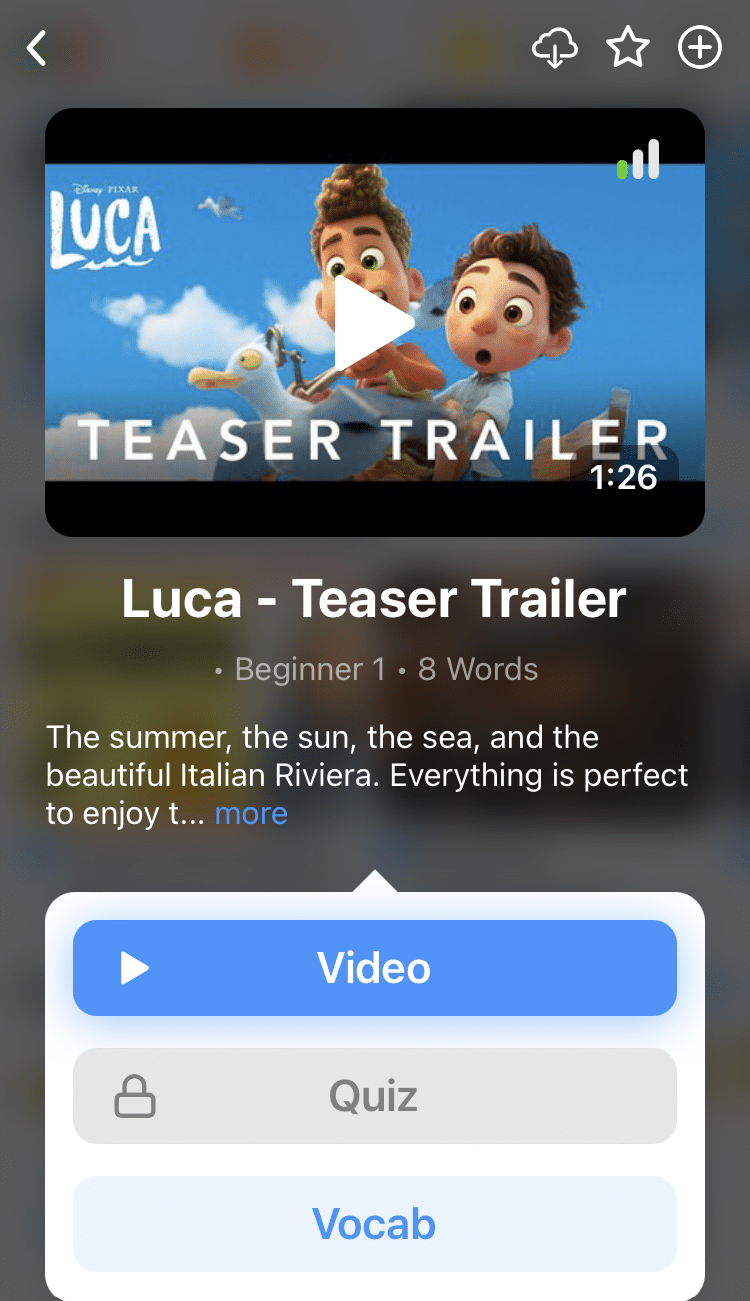
Once you've watched a video, you can use FluentU's quizzes to actively practice all the vocabulary in that video. Swipe left or right to see more examples of the word you’re on.
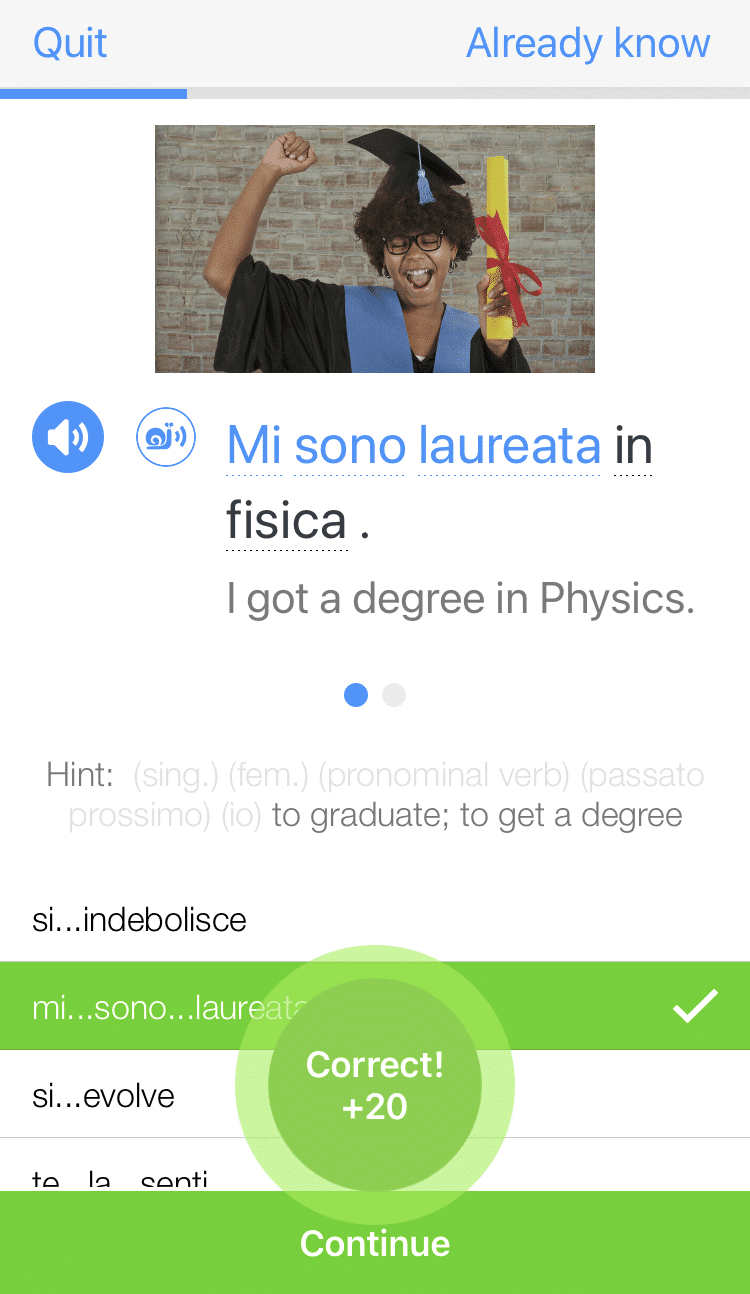
FluentU will even keep track of all the Italian words you’re learning, and give you extra practice with difficult words. Plus, it'll tell you exactly when it's time for review. Now that's a 100% personalized experience!
The best part? You can try FluentU for free with a trial.
Start using the FluentU website on your computer or tablet or, better yet, download the FluentU app from the iTunes or Google Play store. Click here to take advantage of our current sale! (Expires at the end of this month.)



